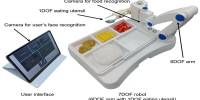In the world of technology, flexible electronics are game changers. Flexible electronics have numerous advantages, and because they are lightweight and malleable, they change the capabilities of products and equipment in a variety of industries. To grasp the potential of flexible electronics, you must first understand what they are, why they are used, and who uses them. Then you’ll be prepared to understand current trends in flex circuit technology as well as what the technology’s future holds.
Flexible electronics, also known as flex circuits, are a type of electronic technology that can be mounted on stretchable or conformable substrates. These flex circuits distinguish themselves through their ability to be bent, twisted, stretched, or conformed into unique shapes. The substrates are mainly plastic, but there are versions made out of flex glass, metal foil and paper. A special kind of conductive polyester film is typically used in the construction process.
Scientists at Daegu Gyeongbuk Institute of Science and Technology (DGIST) in Korea have created a flexible material that glows brightly when stretched and/or when an electric field is applied. The findings, which were published in the journal Applied Physics Reviews, show promise for the development of bright, sustainable, stretchable devices for applications such as interactive skin displays and soft robotics.
Our material overcomes challenges in ‘alternating-current-driven electroluminescent’ (ACEL) devices that are currently under development. Current devices do not provide as much luminescence as scientists would like due to design flaws.
Soon Moon Jeong
“Our material overcomes challenges in ‘alternating-current-driven electroluminescent’ (ACEL) devices that are currently under development,” explains Soon Moon Jeong of DGIST’s Division of Energy Technology. “Current devices do not provide as much luminescence as scientists would like due to design flaws.”
Light-emitting, soft A light-emitting compound is sandwiched between two electrode layers to create ACEL devices. However, for the light in the middle to reach the surface and be seen, at least one of the electrode layers must be transparent. This, however, causes a number of problems depending on the material used, such as the electrode becoming brittle or difficult to fabricate.
Jeong and his colleagues overcame this and other design issues in ACEL devices by inserting stretchable silver nanowire electrodes in-parallel in between two light-emitting layers made of copper-ion-doped zinc sulfide particles embedded in polydimethylsiloxane (ZnS:Cu/PDMS). ZnS:Cu/PDMS has an attractive property: it generates light when it is deformed. This is called mechanoluminescence. By adding the silver nanowire electrodes, the device also becomes electroluminescent. In other words, applying an electric field to it causes the material to shine brightly. “Our device is unique in that it can simultaneously produce mechano- and electroluminescence,” says Jeong.

In addition, the design allows for the use of thick light-emitting layers, as opposed to previous ACEL devices, which could only use layers thin enough to apply a strong electric field between the two electrodes. The electrodes are inserted as ultra-thin wires inside the light-emitting material in the new design, which solves this problem. The thicker material emits 3.8 times more electroluminescent light than other ACEL devices.
Because of the numerous advantages they offer, flexible electronics are becoming increasingly popular. Flex circuits will continue to be used for a variety of applications as more companies recognize their potential for greater customizability, affordability, and portability. Flexible electronics are becoming increasingly important to professionals and researchers in a wide range of industries.
“Due to its sturdiness against environmental factors and simple design, our proposed structure could currently be used in large-scale outdoor billboards or light-emitting banners,” says Jeong.
Even though wearable technology is already embracing flexible electronics, the future looks even brighter. Large, heavy batteries that take up a significant amount of space in wearable devices are currently impeding the advancement of wearable technology. These batteries can make wearable technology larger than necessary, making it difficult for some users to use.
Flexible batteries can aid in the reduction of the size of smartwatches and other wearable devices. They are ideal for wearable technology because they can be integrated into the bands. Expect to see flexible batteries paired with wearable devices such as smartwatches as technology advances.
The team’s next goal is to improve the device’s electroluminescence in response to a low electric field. To accomplish this, they intend to arrange the silver nanowires in different directions rather than in parallel, as is the case with the current device.
















